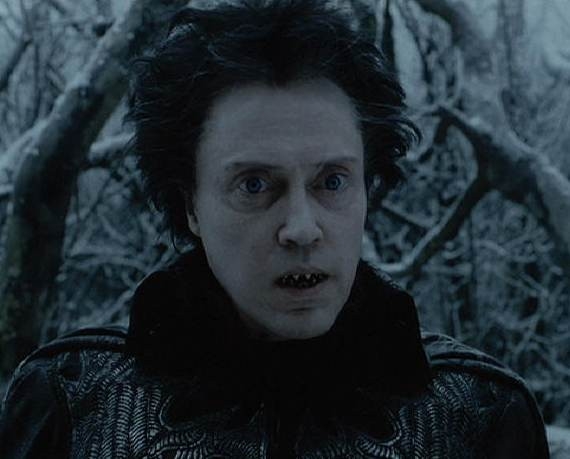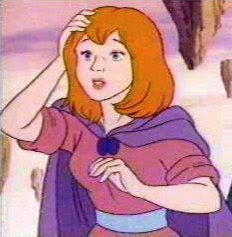Thundarr
Superhero
- Joined
- Sep 4, 2008
- Messages
- 7,577
- Reaction score
- 70
- Points
- 73
Just to clarify the history of the game in its' many incarnations.
From Wikipedia:
Edition history
Main article: Editions of Dungeons & Dragons
Dungeons & Dragons has gone through several revisions. Parallel versions and inconsistent naming practices can make it difficult to distinguish between the different editions.

The original Dungeons & Dragons set.
The original Dungeons & Dragons, now referred to as OD&D,[73] was a small box set of three booklets published in 1974. It was amateurish in production and written from a perspective that assumed the reader was familiar with wargaming. Nevertheless it grew rapidly in popularity, first among wargamers and then expanding to a more general audience of college and high school students. Roughly 1,000 copies of the game were sold in the first year followed by 4,000 in 1975, with sales increasing thereafter.[74] This first set went through many printings and was supplemented with several official additions, such as the original Greyhawk and Blackmoor supplements (both 1975),[75] as well as magazine articles in TSRs official publications and countless fanzines.
[edit] Two-pronged strategy
In 1977, TSR created the first element of a two-pronged strategy that would divide the D&D game for over two decades. A Basic Dungeons & Dragons boxed set was introduced[65] to clean up the presentation of the essential rules, make the system understandable to the general public, and placed in a package that could be stocked in toy stores. In 1978, Advanced Dungeons & Dragons (AD&D) was published,[65] which brought together the various published rules, options and corrections, then expanded them into a definitive, unified game for hobbyist gamers. The basic set directed players who exhausted the possibilities of that game to switch to the advanced rules.
Unfortunately, almost from its inception, differences of design philosophy caused this dual marketing approach to go awry. Gygax, who wrote the advanced game, wanted an expansive game with rulings on any conceivable situation which might come up during play. J. Eric Holmes, the editor of the basic game, preferred a lighter tone with more room for personal improvisation. As a result, the basic game included many rules and concepts which contradicted comparable ones in the advanced game. Confusing matters further, the original D&D boxed set remained in publication until 1979, since it remained a healthy seller for TSR.[67]
Advanced Dungeons & Dragons was designed to create a tighter, more structured game system than the loose framework of the original game.[5] While seen by many as a revision of D&D,[6] AD&D was at the time declared to be "neither an expansion nor a revision of the old game, it is a new game".[5] The AD&D game was not intended to be directly compatible with D&D and it required some conversion to play between the rule sets.[76] The term Advanced described the more complex rules and did not imply "for higher-level gaming abilities". Between 1977 and 1979, three hardcover rulebooks, commonly referred to as the "core rulebooks", were released: the Players Handbook (PHB), the Dungeon Masters Guide (DMG), and the Monster Manual (MM). Several supplementary books were published throughout the 1980s, notably Unearthed Arcana (1985) that included a large number of new rules.[65]
[edit] Revised editions
In 1981, Basic Dungeons & Dragons was revised by Tom Moldvay. However, the rules for the Dungeons & Dragons game continued to diverge and it became a separate and distinct product from TSRs flagship game, AD&D. This game was promoted as a continuation of the original D&D tone, whereas AD&D was an advancement of the mechanics.[5] Although simpler overall than the Advanced game, it included rules for some situations not covered in AD&D. There were five sets: Basic (1977, revised in 1981 and again in 1983), Expert (1981, revised in 1983), Companion (1983), Master (1985), and Immortals (1986, revised in 1991). Each set covered game play for more powerful characters than the previous.[77] The first four sets were later compiled as a single hardcover book, the Dungeons & Dragons Rules Cyclopedia (1991).

First edition Advanced Dungeons & Dragons Dungeon Masters Guide.
Advanced Dungeons & Dragons 2nd Edition, sometimes referred to as AD&D2 or 2nd Ed, was published in 1989,[65] again as three core rulebooks; the primary designer was David "Zeb" Cook. The Monster Manual was replaced by the Monstrous Compendium, a loose-leaf binder that was subsequently replaced by the hardcover Monstrous Manual in 1993. In 1995, the core rulebooks were slightly revised, although still referred to by TSR as the 2nd Edition,[78] and a series of Players Option manuals were released as optional core rulebooks.[65]
The release of AD&D2 deliberately excluded some aspects of the game that had attracted negative publicity. References to demons and devils, sexually suggestive artwork, and playable, evil-aligned character types such as assassins and half-orcs were removed.[79] The edition moved away from a theme of 1960s and 1970s "sword and sorcery" fantasy fiction to a mixture of medieval history and mythology.[80] The rules underwent minor changes, including the addition of non-weapon proficiencies skill-like abilities that originally appeared in 1st Edition supplements. The game's magic spells were divided into schools and spheres.[1] A major difference was the promotion of various game settings beyond that of traditional fantasy. This included blending fantasy with other genres, such as horror (Ravenloft), science fiction (Spelljammer), and apocalyptic (Dark Sun), as well as alternative historical and non-European mythological settings.[81]
[edit] Wizards of the Coast
In 1997, a near-bankrupt TSR was purchased by Wizards of the Coast. Following three years of development, Dungeons & Dragons 3rd Edition was released in 2000.[82] This game is referred to as D&D3 or 3E and is not to be confused with the 1983 edition of the basic D&D game. The new release folded the Basic and Advanced lines back into a single unified game. It was the largest revision of the D&D rules to date, and also served as the basis for a multi-genre role-playing system designed around 20-sided dice, called the d20 System.[83] The 3rd Edition rules were designed to be internally consistent and less restrictive than previous editions of the game, allowing players more flexibility to create the characters they wanted to play.[84] Skills and feats were introduced into the core rules to encourage further customization of characters.[85] The new rules also standardized the mechanics of action resolution and combat.[86]
In 2003, Dungeons & Dragons v.3.5, also known as Revised 3rd Edition or D&D3.5, was released as a revision of the 3rd Edition rules. This release incorporated hundreds of rule changes, mostly minor, and expanded the core rulebooks.[86]
In early 2005, Wizards of the Coast's R&D team started to develop Dungeons & Dragons 4th Edition, prompted mainly by the feedback obtained from the D&D playing community and a desire to make the game faster, more intuitive, and with a better play experience than under the 3rd Edition. The new game was developed through a number of design phases spanning from May 2005 until its release.[87]
Dungeons & Dragons 4th Edition was announced at Gen Con in August 2007, and the initial three core books were released June 6, 2008.[7] 4th Edition streamlined the game into a simplified form and introduced numerous rules changes. Many character abilities were restructured into "Powers". These altered the spell-using classes by adding abilities that could be used at will, per encounter, or per day. Likewise, non-magic-using classes were provided with parallel sets of options. Wizards of the Coast is releasing other supplementary material virtually through their website,[88][89] including player character and monster building programs.[90]



























































